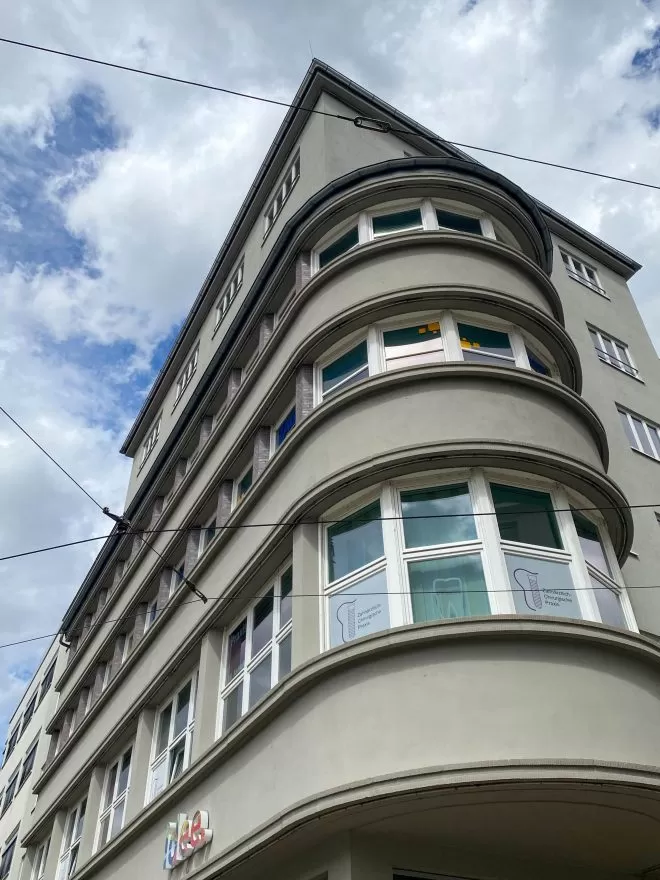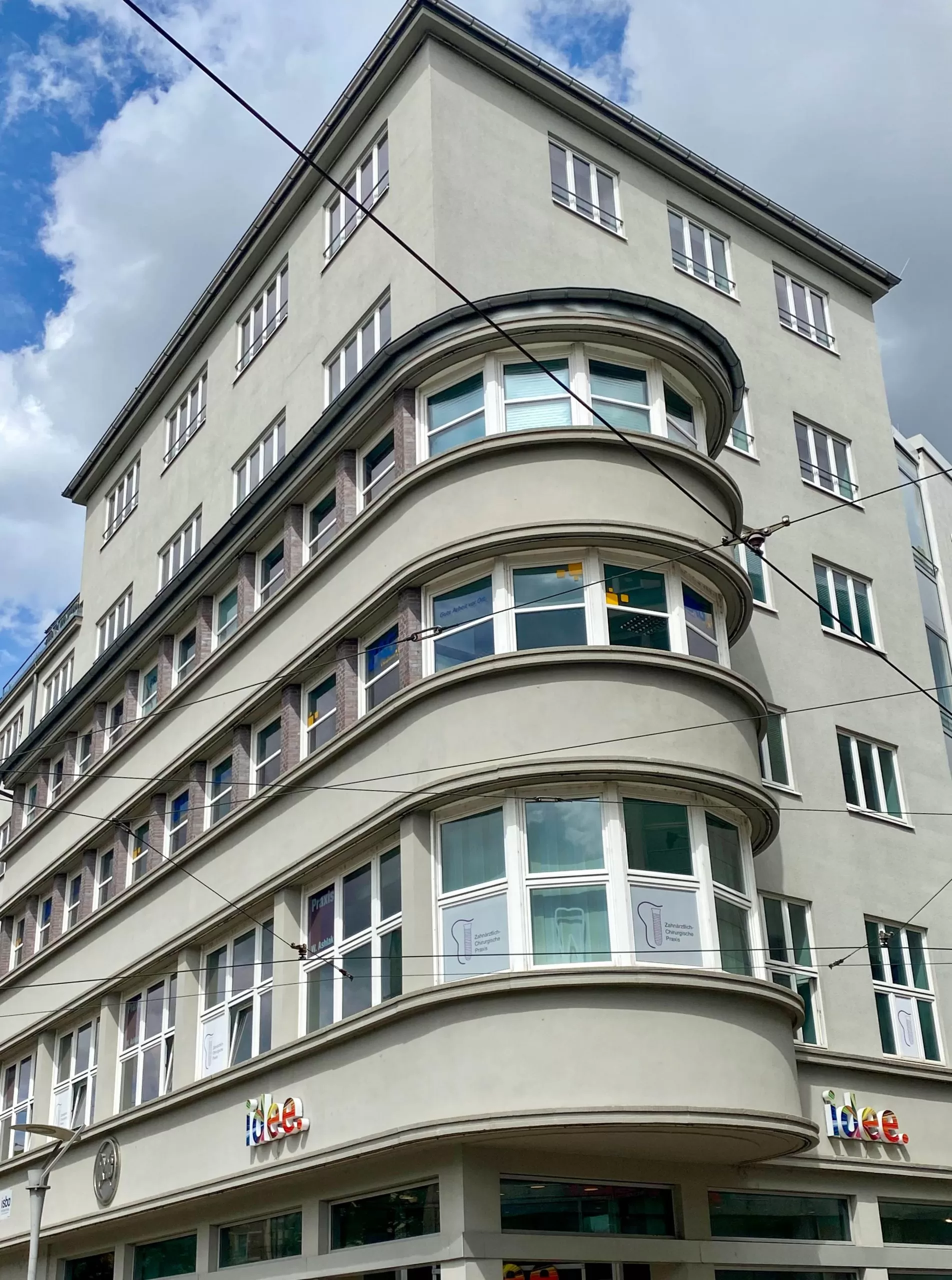
DHV-Haus, 1928-1929. Architect: Heinrich Herrling. Photo: Daniela Christmann
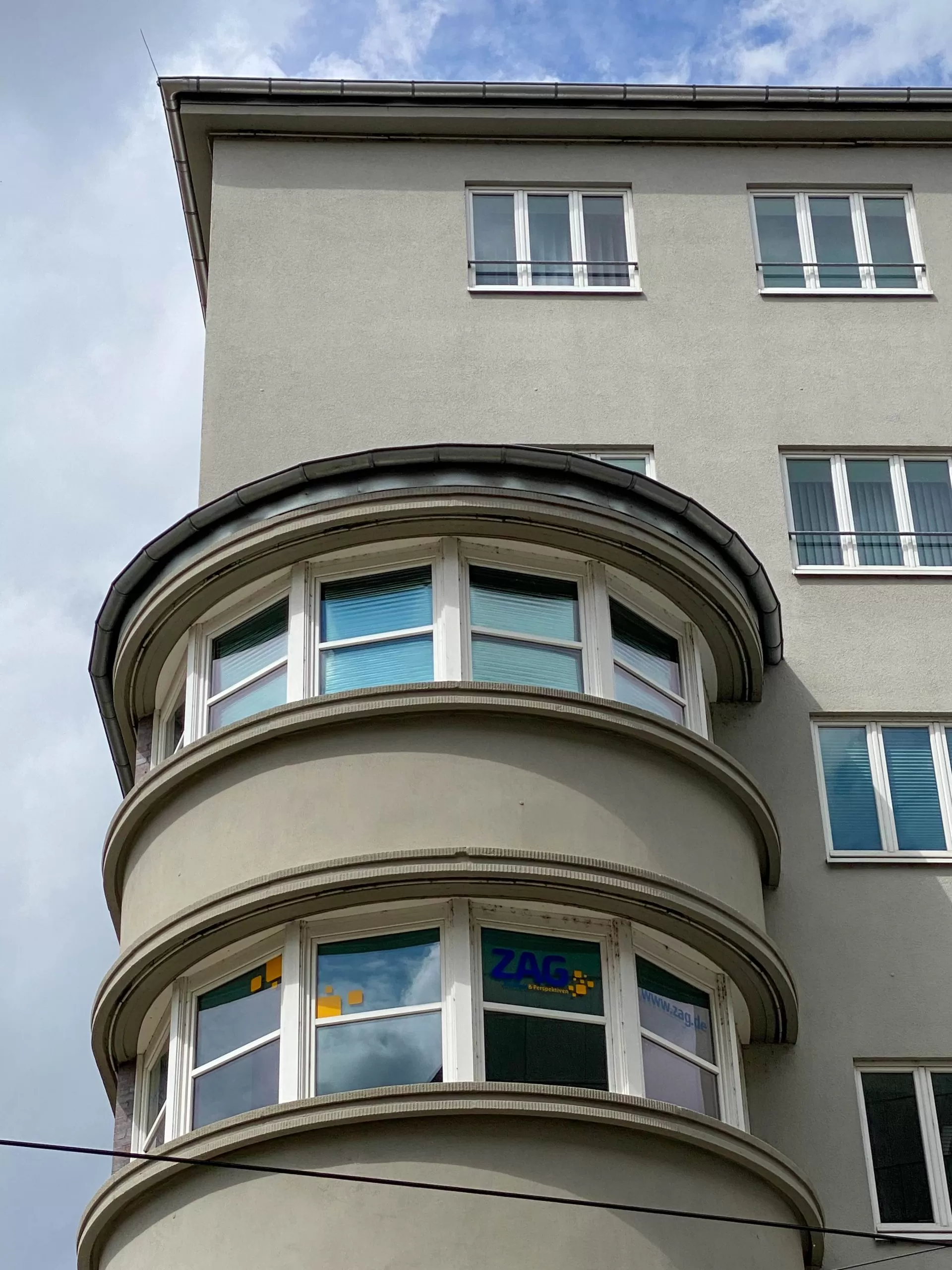
DHV-Haus, 1928-1929. Architect: Heinrich Herrling. Photo: Daniela Christmann
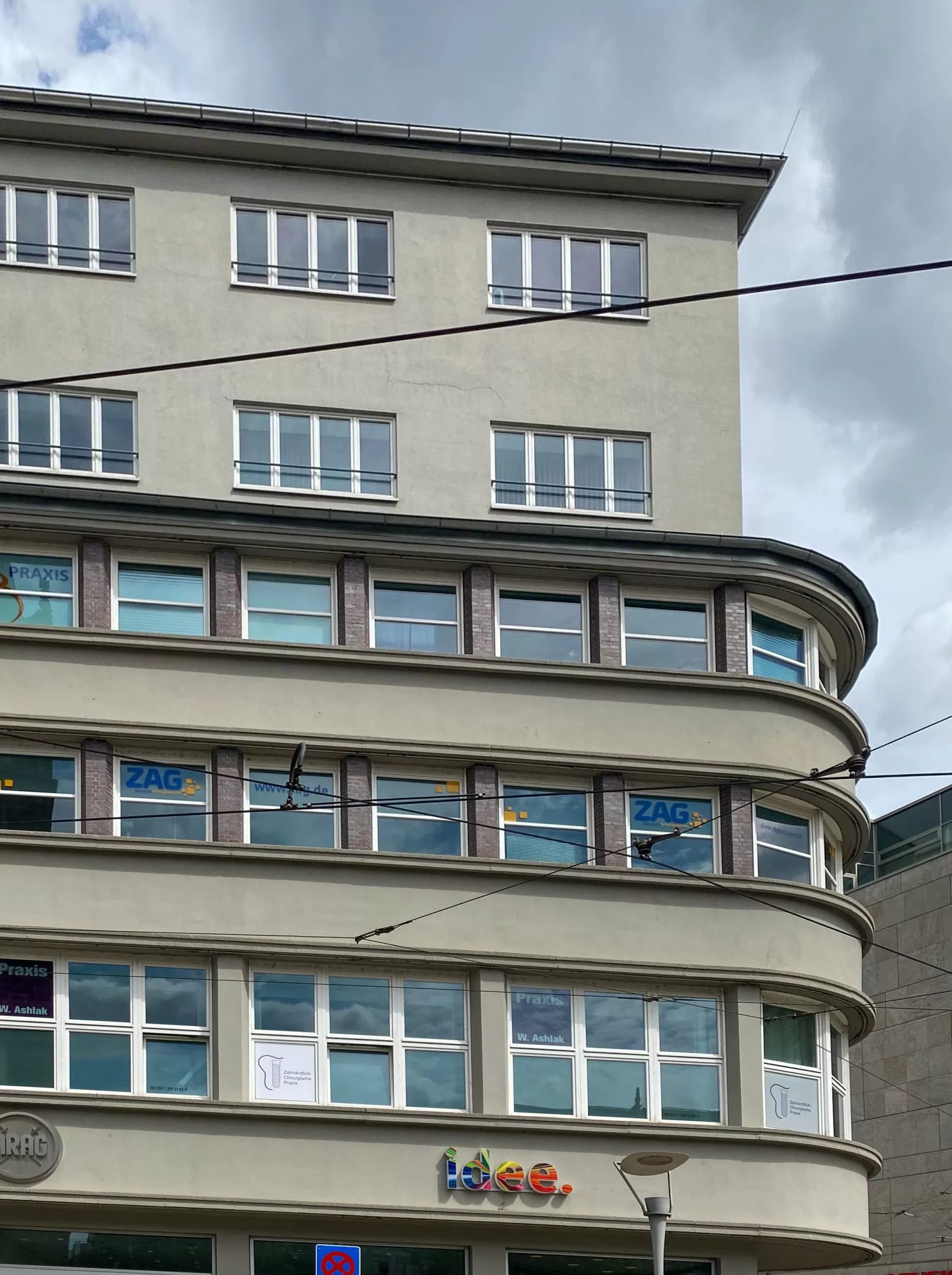
DHV-Haus, 1928-1929. Architect: Heinrich Herrling. Photo: Daniela Christmann
1928 – 1929
Architect: Heinrich Herrling
Anger 81, Erfurt, Germany
Designed by Heinrich Herrling, the office and commercial building with a four-story, front-facing curved bay was built between 1928 and 1929 and is one of the most outstanding examples of Neues Bauen in Erfurt.
Building
During construction, the building was already given the name DHV-Haus because the state association and the local group of the Deutschnationaler Handlungsgehilfen-Verband rented four floors while the building was still being completed.
With a height of 21 meters, it exceeded the building regulations of the city of Erfurt at the time by three meters and was therefore the first high-rise building in the city.
The client was the Nottrodt community of heirs, who had it built as one of the first office buildings in Erfurt at the junction of Johannesstrasse and Anger.
Construction
It is constructed as a steel skeleton structure. This allowed a flexible room layout for the offices.
The rooms on the first floor were intended for stores. A cinema was located on the second floor.
The six-story building with a height of 21 meters is notable for a multi-story component protruding from the front, which tapers off into a rounded bay at the corner.
Larger windows characterize the first floor. On the second and third floors, the long window bands are interrupted by brick piers.
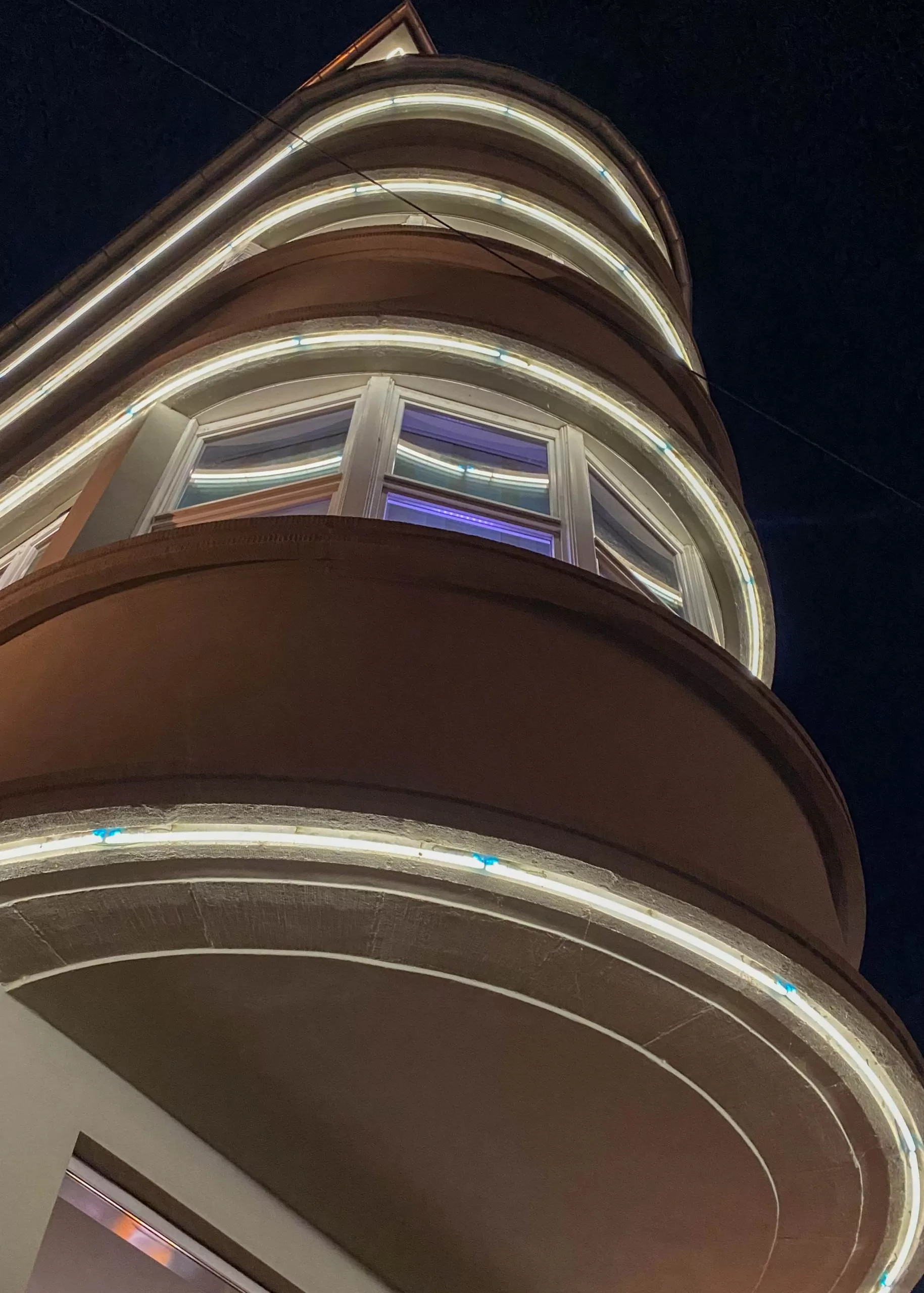
DHV-Haus, 1928-1929. Architect: Heinrich Herrling. Photo: Daniela Christmann
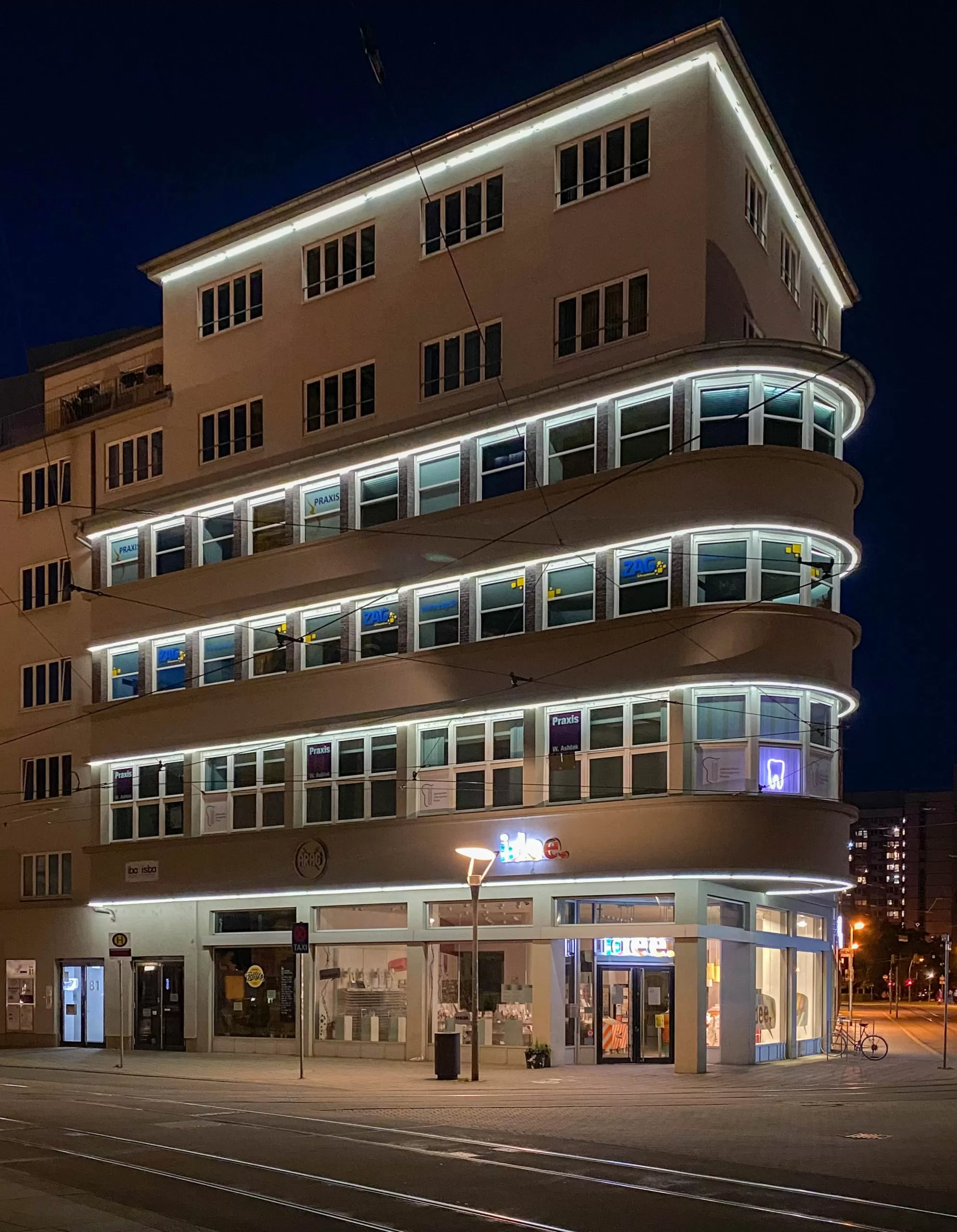
DHV-Haus, 1928-1929. Architect: Heinrich Herrling. Photo: Daniela Christmann
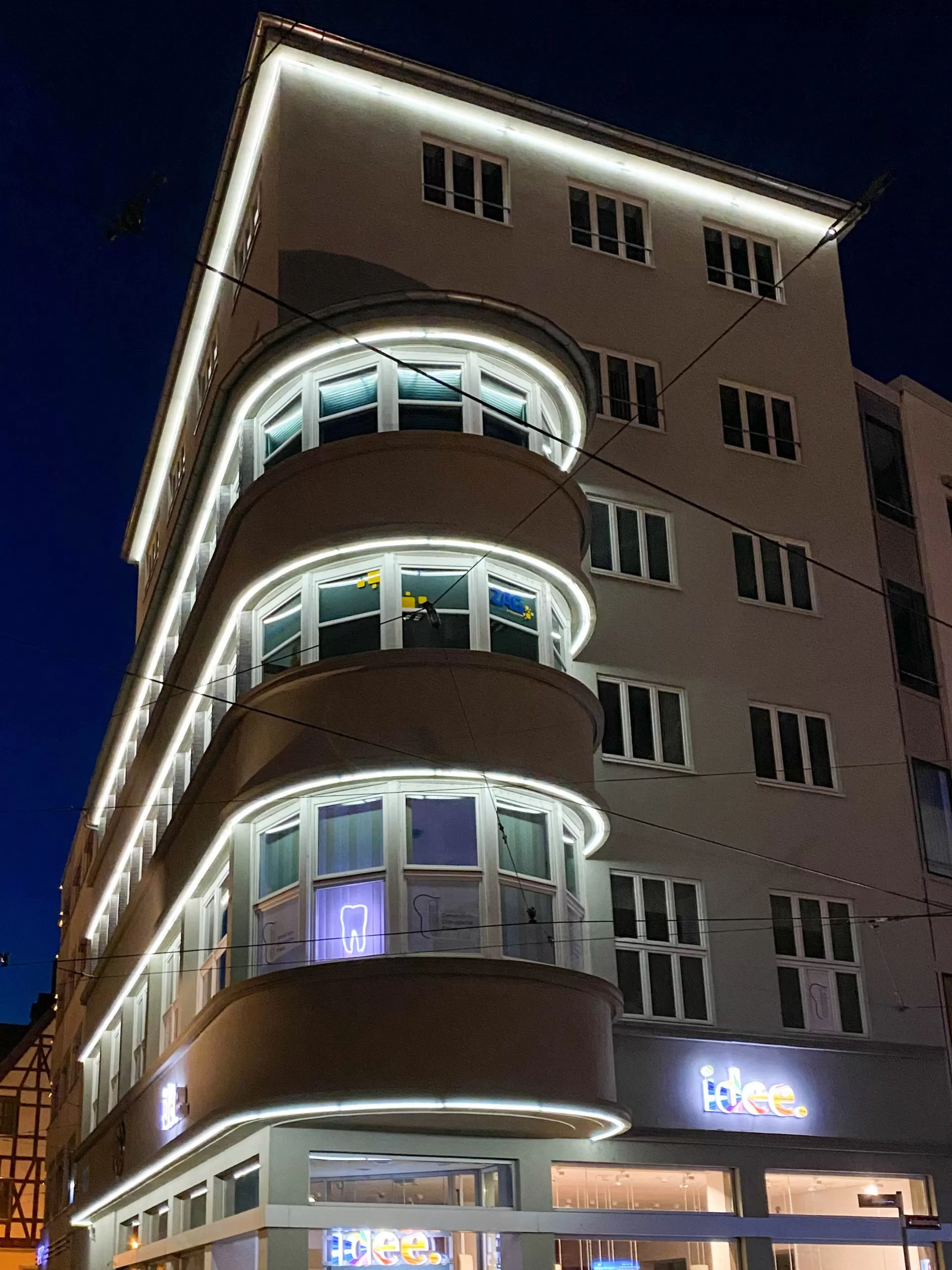
DHV-Haus, 1928-1929. Architect: Heinrich Herrling. Photo: Daniela Christmann
Architecture of the Night – Light Architecture
At night, the building presented itself with an outstanding exterior illumination.
Underneath the projecting lintel cornices, light strips were installed that emphasized the dynamics of the facade over four stories.
The end of the roof edge was additionally marked with a surrounding neon tube.
In 1926, black-and-white photographs of day and night shots of the Schocken department store in Nuremberg by photographer Arthur Köster were published for the first time in the magazine Der Neue Bau.
Three years later, day and night photographs of the DHV building by photographer Eduard Bissinger were published in issue 2/1929 of the magazine Die Baugilde.
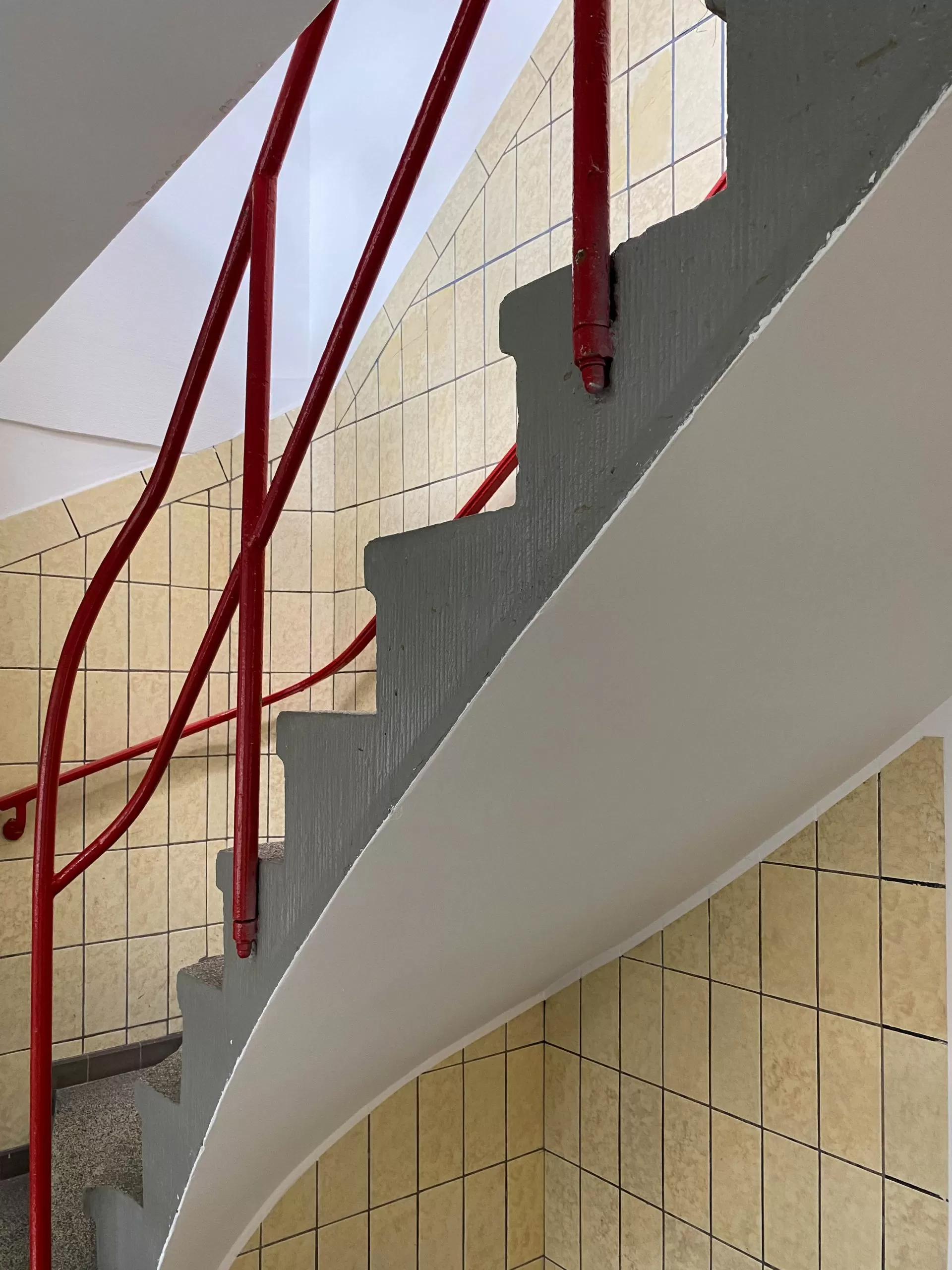
DHV-Haus, 1928-1929. Architect: Heinrich Herrling. Photo: Daniela Christmann
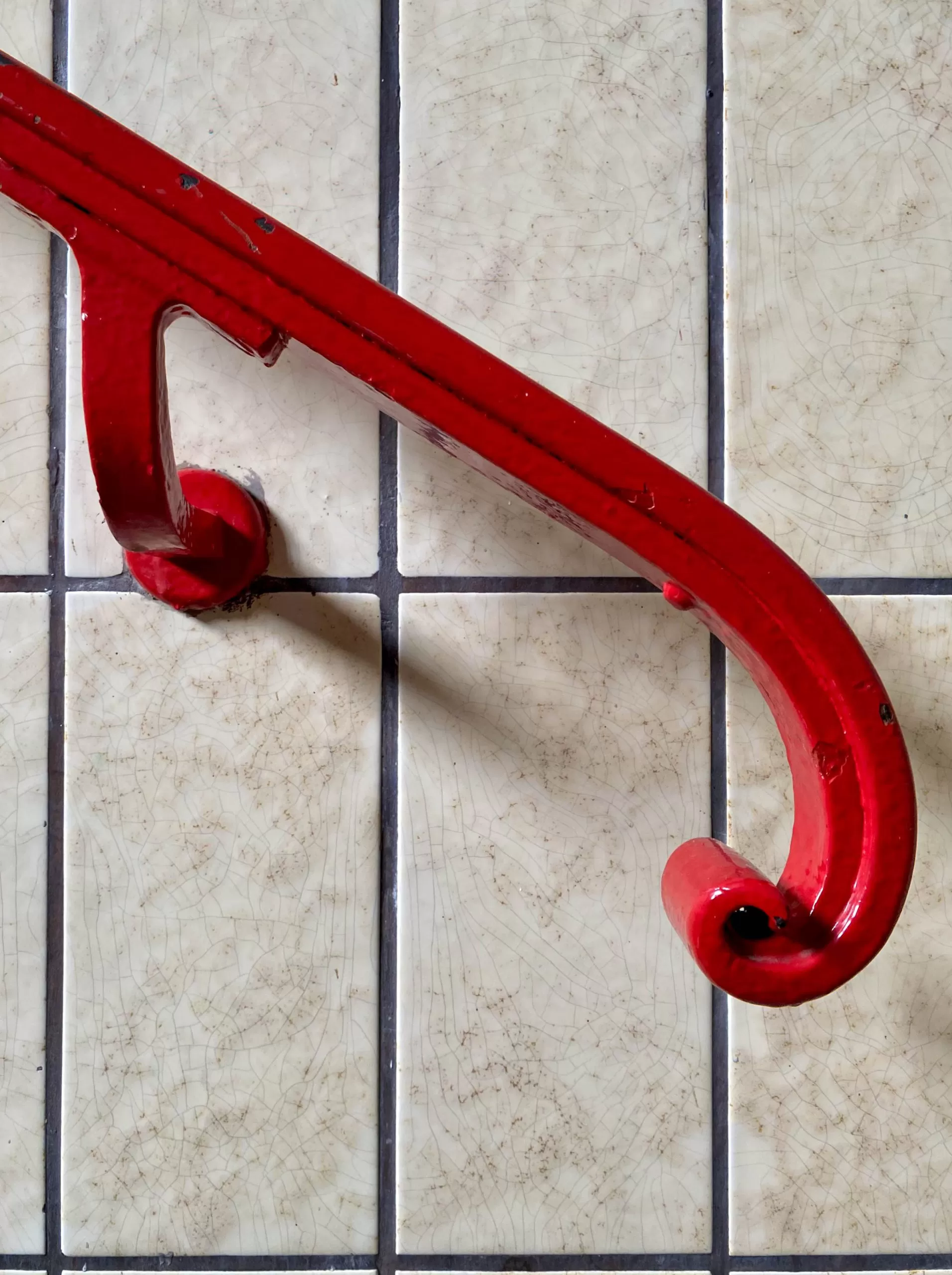
DHV-Haus, 1928-1929. Architect: Heinrich Herrling. Photo: Daniela Christmann
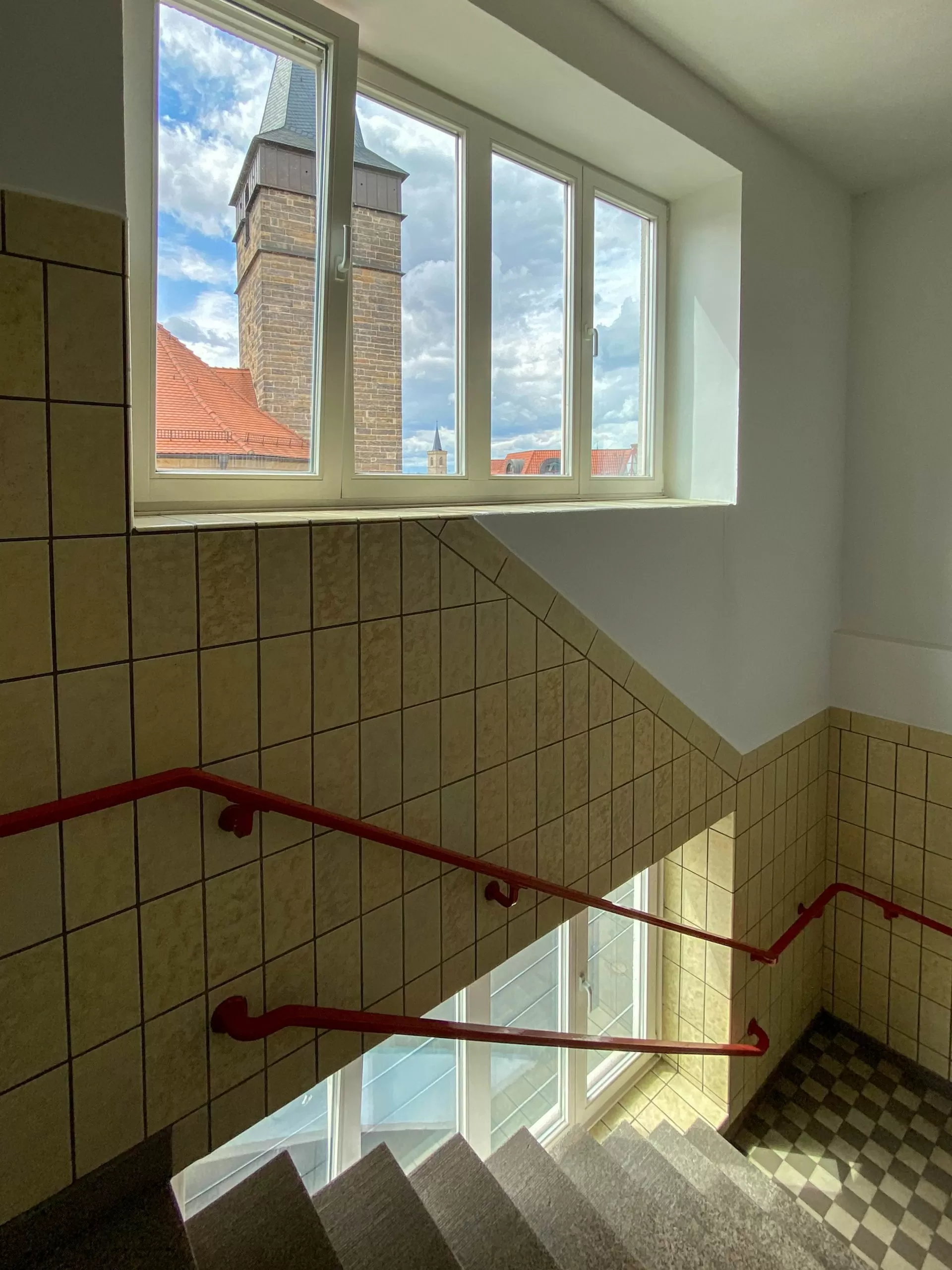
DHV-Haus, 1928-1929. Architect: Heinrich Herrling. Photo: Daniela Christmann
Change of Ownership and Post-War Period
In 1937, the building changed hands and became the property of the Deutscher Ring insurance company.
The first floor now housed a representative entrance hall instead of stores.
In 1947, the building became the property of the Thuringian State Insurance Institute and was once again remodeled.
In the course of a general renovation in 1999, the original light architecture, a contour illumination of the rotunda with neon tubes, was reconstructed.
Today, the office building is part of a residential and commercial complex completed in 2001.

